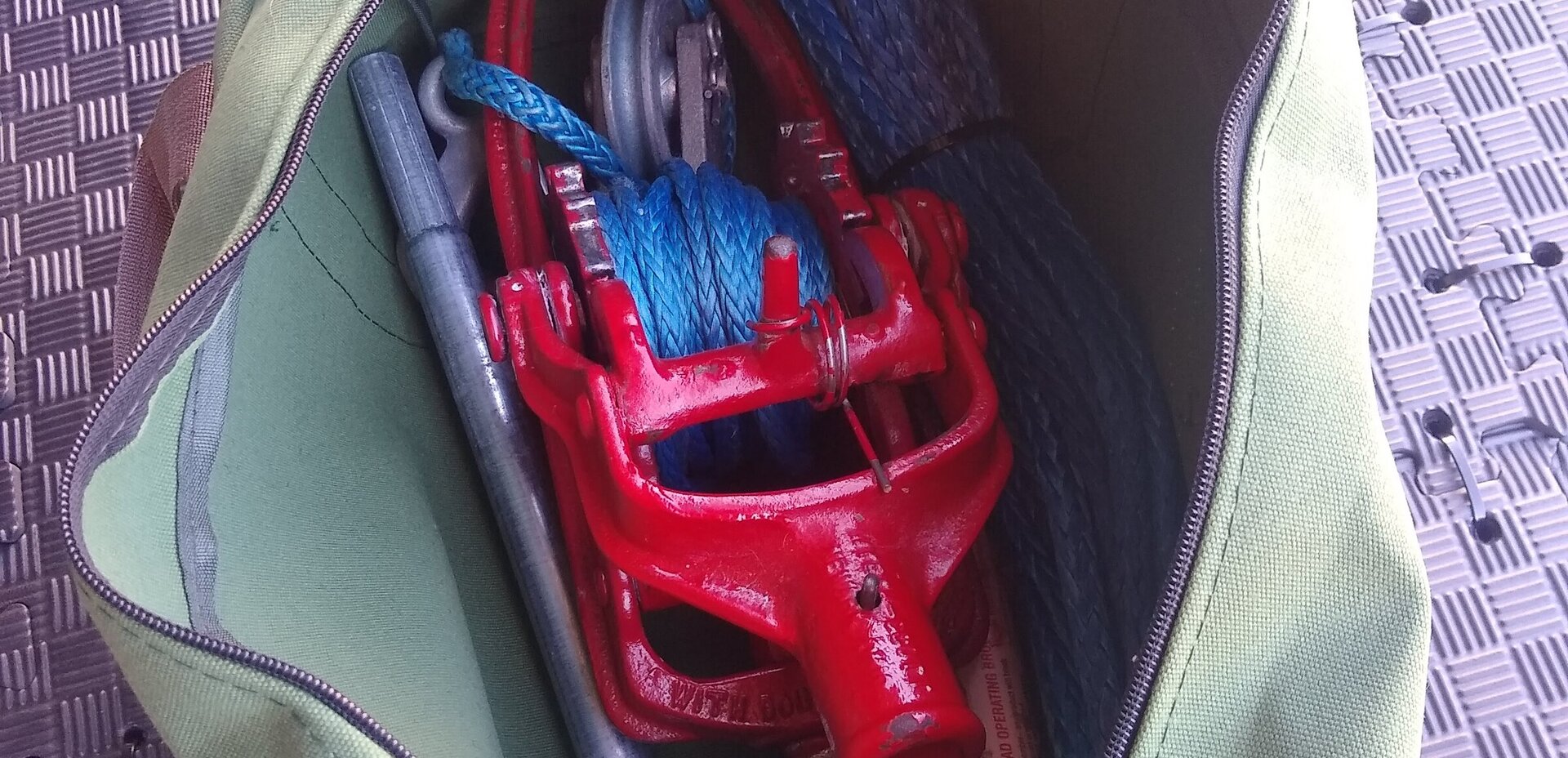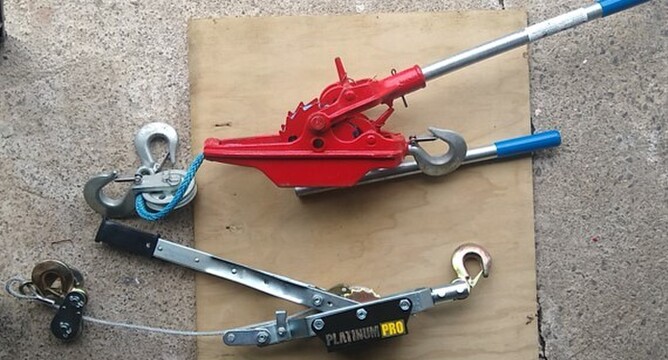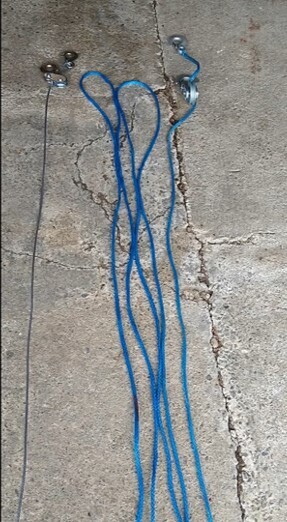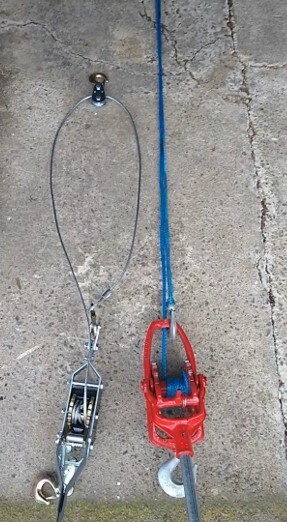There are a range of hand winches available. Traditional mechanical winches have typically been broken into two categories:
1. Come-a-Long : These hand winches are interchangeably called ratchet pullers. They use a reel/drum to hold either steel cable or synthetic rope (i.e. AmSteel Rope with the More Power Puller). On the drum are a number of teeth (or 'ratchets') of which a pawl can engage and lock into. A handle connected to the drum allows the operator to rotate the drum, winding on line, of which the pawl clicks through the various teeth. Most importantly, the pawl provides a safety lock to ensure that under tension, the cable or rope does not unwind.
A second pawl may be present in some designs, engaging the teeth from the opposite side of the drum, which allows a user to release tension by 'walking' the reel backwards.
2. Tirfor: These winches are commonly linked to one of the original designs by the brand Tractel. Numerous versions and brands now exist. They differ from a come-along on the basis there is no reel to wind rope/cable onto - a steel cable is fed through a chamber of which two jaws clasp the cable. A handle acts as the lever operating the jaws, allowing the cable to move through the chamber. The action can be reversed, allowing the tension to be released slowly (like the come-alongs).
While both hand winches are capable of similar feats of pulling and lifting, their are some noticeable differences. The Tirfor winch only uses steel cable, but can have up to 20 m of cable which allows for long (single line) pulls. Typical ratings for 4WD recovery are up to 3.2 tonnes (single line). The downfall of these winches are that they are large and heavy, with a full setup including cable weighing over 56 kg for some models (i.e. 3.2 tonnes).
As any 4WD enthusiast will know, a single line pull puts the greatest amount of strain on the cable or rope, and also on the operator who needs a higher amount of force to undertake winching. Subsequently, if a double, triple or quadruple line pull can be undertaken, the winching effort is significantly reduced and can increase safety for the operator. See an example of a double and quadruple line pull in this video.
Trifor winches are not easily designed for double line pulls using the steel cable, as due to its cable thickness, is not intended to bend through snatch blocks (and doing so can weaken the cable). Tractel do provide snatch blocks for suitable models, but they are large and heavy. The 3.2 tonne model needs an E480H snatch block for the 16.2 mm diameter steel cable. This snatch block alone weighs 34 kg! To undertake a double line pull with these winches during 4WD recovery, a long synthetic rope could be used to attach to the cable and then be run through a lighter/smaller snatch block and back to an anchor point.
Come-alongs are often designed to undertake both single line pulls and double line pulls. They come with a hook mounted to a pulley on the cable/rope, allowing a user to reduce winching effort for heavier loads. However, doing so can shorten the length of pull significantly for some models. The abundant, cheap chinese made come-alongs typically only have <2 m of steel cable on the drum, which when undertaking a double line pull is reduced to <1 m. This would mean alot of re-sets may be needed for any winching operation. The steel cable is also a greater risk to the operator if it snaps.
Wyeth Scott More Power Pullers use synthetic Dyneema Rope to increase safety and reduce weight (weighing only 11 kg). The larger drum with precision cut teeth can hold up to 11 m of rope, allowing double line pulls of ~5 m, before a re-set may be required. If used in tandom with a snatch block (off a vehicle) and spare Dyneema Rope, then a double line pull (halving the winching effort, or pulling twice the weight) could be setup using the full 11 m of rope. This significantly reduces the number of re-sets required for the winching operation. A comparison between different come-alongs can be seen in this video.
Safety mechanisms in both types of hand winches depend on the model and brand you are buying. Tirfor style winches have shear pins in the handle, which are designed to fail when load capacity is reached (meaning the handle can no longer engage). Cheap come-alongs have limited safety factors built in, except for a short handle which effectively means the operator cannot apply enough leverage/force to exceed the load capacity. Extension handles cannot be used on these come-alongs, as it would exceed their load capacities and risk failures. Wyeth-Scott More Power Pullers are designed with a rated safety handle which bends at load capacity. The bent portion of the handle can be cut off and it re-used at a later date. In addition, an extension handle can be added to the safety handle, which halves the winching effort by providing greater leverage for the operator.
The More Power Pullers provide a great balance of safety and practicality, being both light and portable (1/5th the weight of the Tirfor), but built well to handle pulling large loads up to 5.4 tonnes and dead lifting (vertically) up 2.7 tonnes (with included snatch block for double line pulls). They wont be suitable for hot work areas (i.e. fire fighting) as the Dyneema Rope could melt under direct heat, but should tick the boxes for the majority of applications.



